Kinesis Lyfe Equipped Electric Hybrid Bike review
A fully loaded commuter bike, the Lyfe Equipped comes highly recommended

An extremely comfortable, fun ride, with practical accessories as standard. The relitively low torque EBikemotion hub means pedalling still feels natural and you'll certainly get some exercise, but the hills are less intimidating. The top tube mounted control button is a little counterintuitive, but you can pair it all to a phone or cycling computer to solve the issue. Since the ‘Equipped' pack only adds £100, it seems like a no-brainer to invest a little extra.
-
+
Value vs competitors
-
+
Lightweight vs competition
-
+
Mudguards and pannier rack as standard
-
+
Integrated lights as standard
-
-
Best when paired with a cycling computer or phone for mode control
You can trust Cycling Weekly.

Whilst I’ve a garage full of race-ready road bikes, there are instances where I simply want to get from A to B, ideally with as little physical exertion as possible - and an electric bike like the Lyfe Equipped is built for exactly that job. Now, pedalling a bike is never going to be as low intensity as walking - electric bikes do not do all of the work for you and if you are looking to get fit via using one, you absolutely will. The added motor just takes the sting out of the hills.
In the case of the Kinesis Lyfe, the motor lives in the rear hub. This is a popular method among some of the best electric bikes, as it keeps the overall weight of the bike relatively low and is aesthetically very subtle.
The Lyfe Equipped comes with mudguards, pannier racks and integrated lights as standard, considered alongside the £2300 RRP, it’s a very good package. You can opt for the £2200 Lyfe 'non-equipped' - but the value of the add ons is far greater than £100, so I can’t see why you would.
Kinesis Lyfe Construction
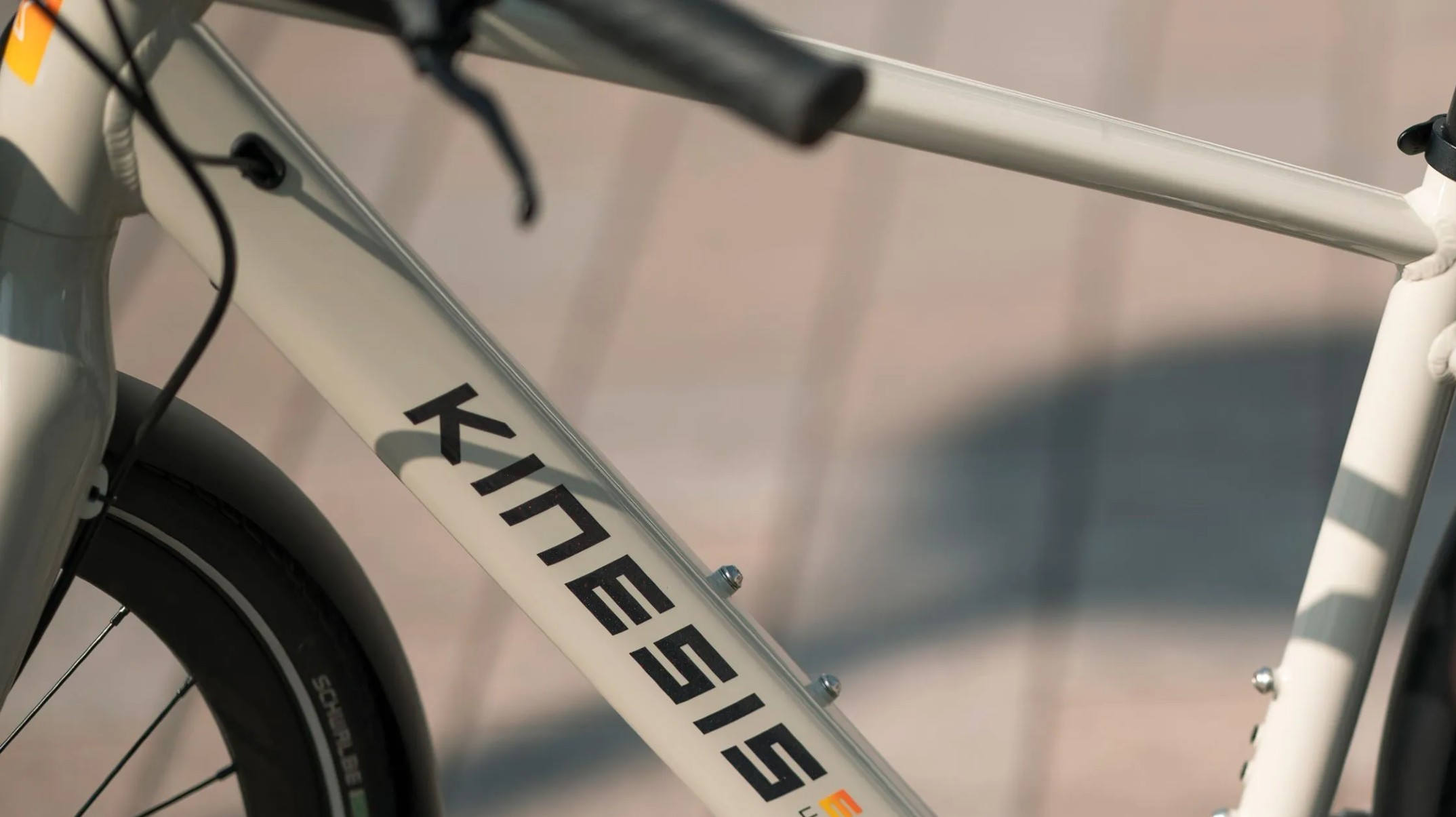
British brand Kinesis is an expert in aluminium, and as such, this is the material at the heart of the Lyfe; in this instance, double-butted tubing is used - this means there are two levels of thickness.
Higher-end frames are triple-butted, which allows manufacturers to cut the weight by strategically using less material in some areas. Still, the overall weight of this bike is 16.5kg - which is a lot less than competitors offer for more money.
The fork is aluminum too, so there’s no carbon used to dull out road vibration - however, the bike does wear 42mm Schwalbe tyres, run these at a squishy low PSI and you’ll enjoy plenty of comfort.
Kinesis has opted for the Mahle Ebikemotion X35 system, it’s a 36V 250W motor, which is located in the rear hub. The motor offers 40Nm of torque, this is relatively low (high torque motors will be around 75Nm), and means pedalling feels natural, but you won't get a huge boost of the traffic lights or on a steep climb. There's more information on e-bike motors on our dedicated 'how to buy an e-bike' page.
Battery charging is via a port located above the bottom bracket - it’s not removable, so you’ll need to be able to place the bike next to a power supply (a garage is perfect). A rubber cover keeps dirt and water out.
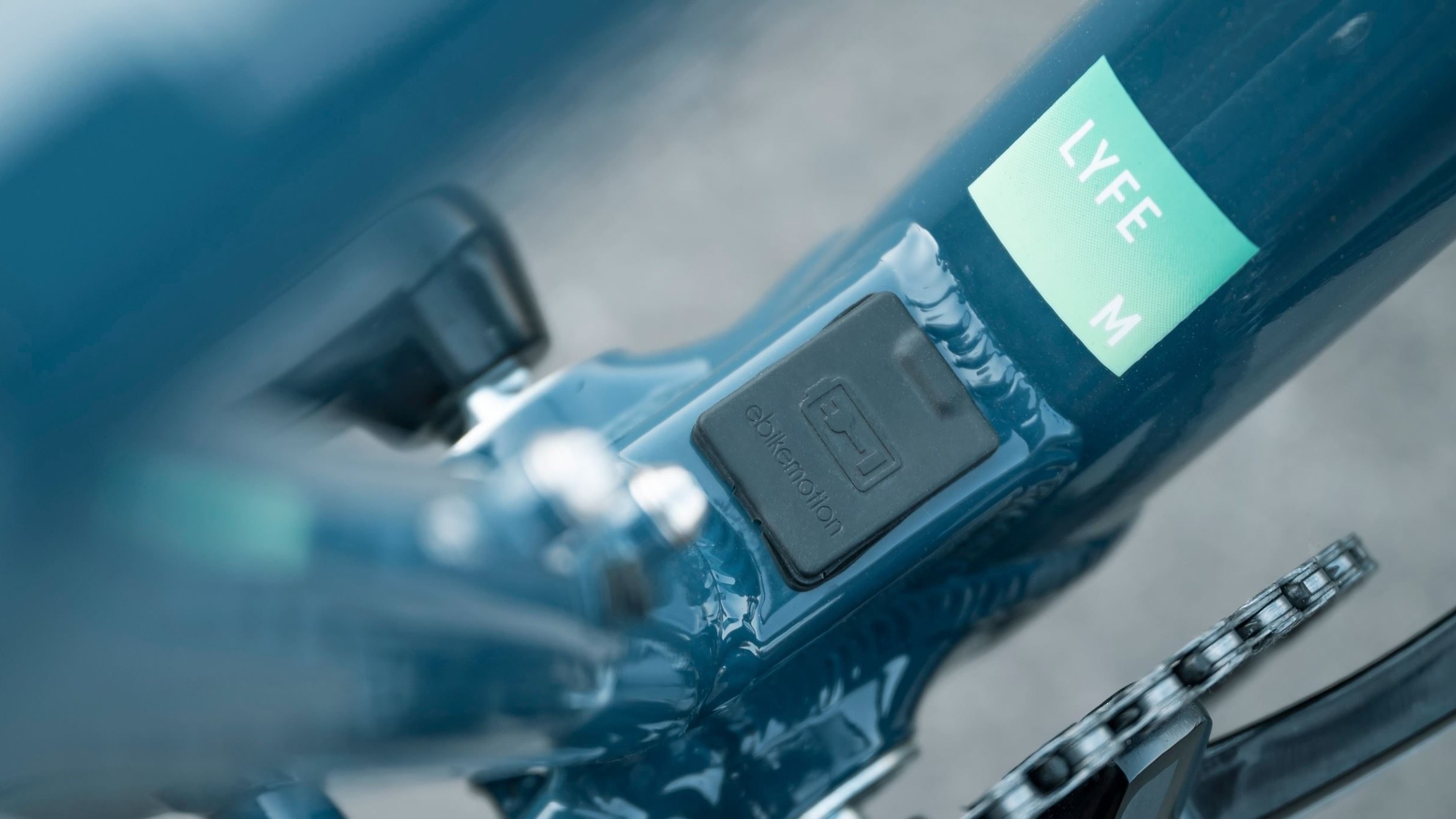
The claimed battery life is 75km, however, this will be affected by mode selection, rider weight, weather conditions (motors struggle against headwinds as much as people do) and also the ads ons you use - the lights, for example, will take their share of the juice.
Specification wise, Kinesis has opted for hydraulic disc brakes - this is good news, I’m not a fan of cable-actuated discs, at all. Hydraulics are reliable, quick and effective - and with the bike weighing 16-17kg (size dependant), you do need some quality stopping power.
The shifters and rear mech are Shimano Deore 10 speed, with a saving made via a cheaper Sunrace cassette. This uses an 11-42 ratio alongside a single 40T chainring. I expected the jumps between gears to feel large, as would be the case on an unassisted road bike at this ratio. However, with the added power I could always slip into an ideal cadence.
The finishing kit - seatpost, handlebars, stem - are all aluminium, with a quick release seatpost, that makes changes in saddle height very easy should multiple riders within one household want to make use of the bike.
The handlebars measure 690mm across all sizes, with a 9 degree sweep to create a comfortable and relaxed position, which compliments the geometry that, again, is high and relatively short - ideal for commuting and negotiating traffic.
As mentioned, the tyres are Schwalbe Road Cruiser Plus. Having worked in a bike shop in a previous life, I know the search for ‘puncture proof’ tyres is an earnest one. Sorry to be the bearer of bad news, but no tyres (except solid tyres) are fully puncture proof, but these are sturdy and have not punctured during my test period.
The saddle is Kinesis' own Kinesis Crosstown Anti Slip saddle, I found it comfortable enough when riding in an upright position, but saddle comfort is very personal.
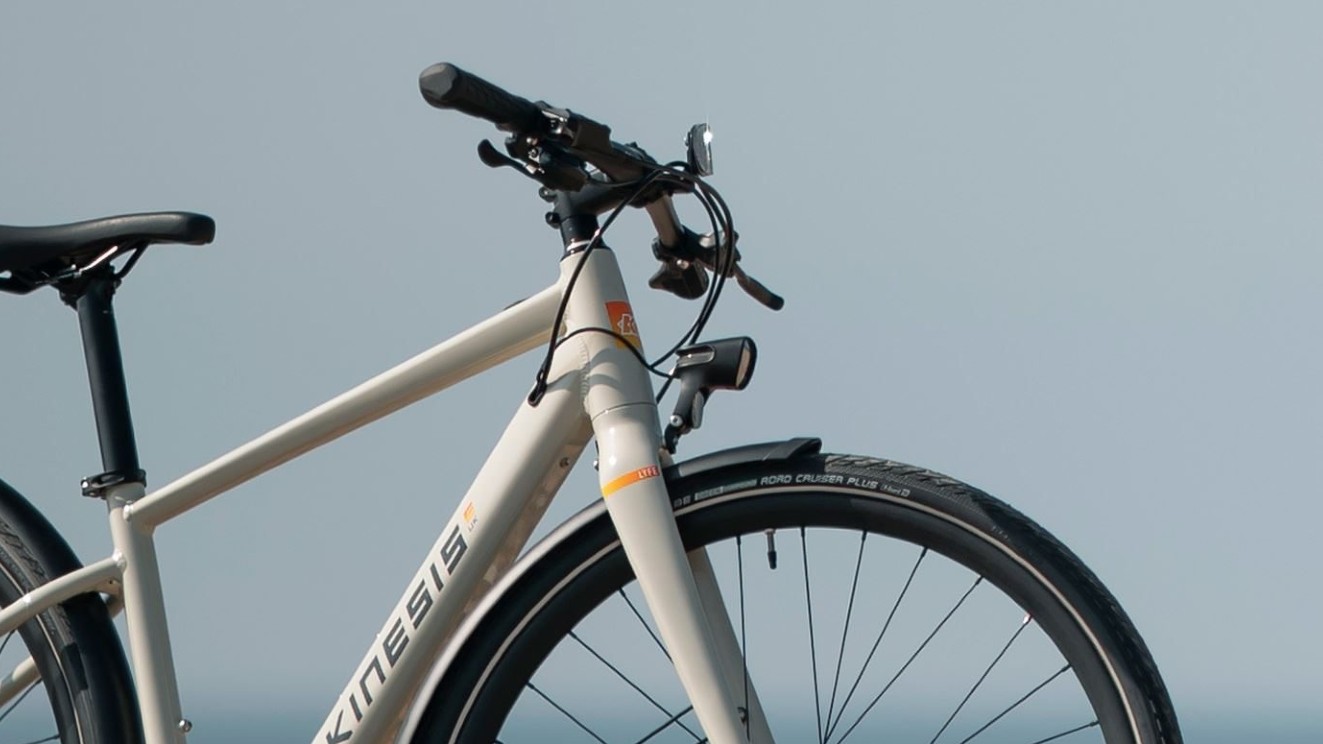
The added extras made available in the 'Fully Loaded' Lyfe are worth their weight in gold. Integrated lights mean you don't have to mess around with removing and re-fitting a pair (though be aware the front beam is a 'be seen' not a 'seeing' bike light), the mudguards fit perfectly and don't rub, the pannier rack will be handy for heavy loads and a kickstand is really useful when a bike weighs over 10kg.
The ride
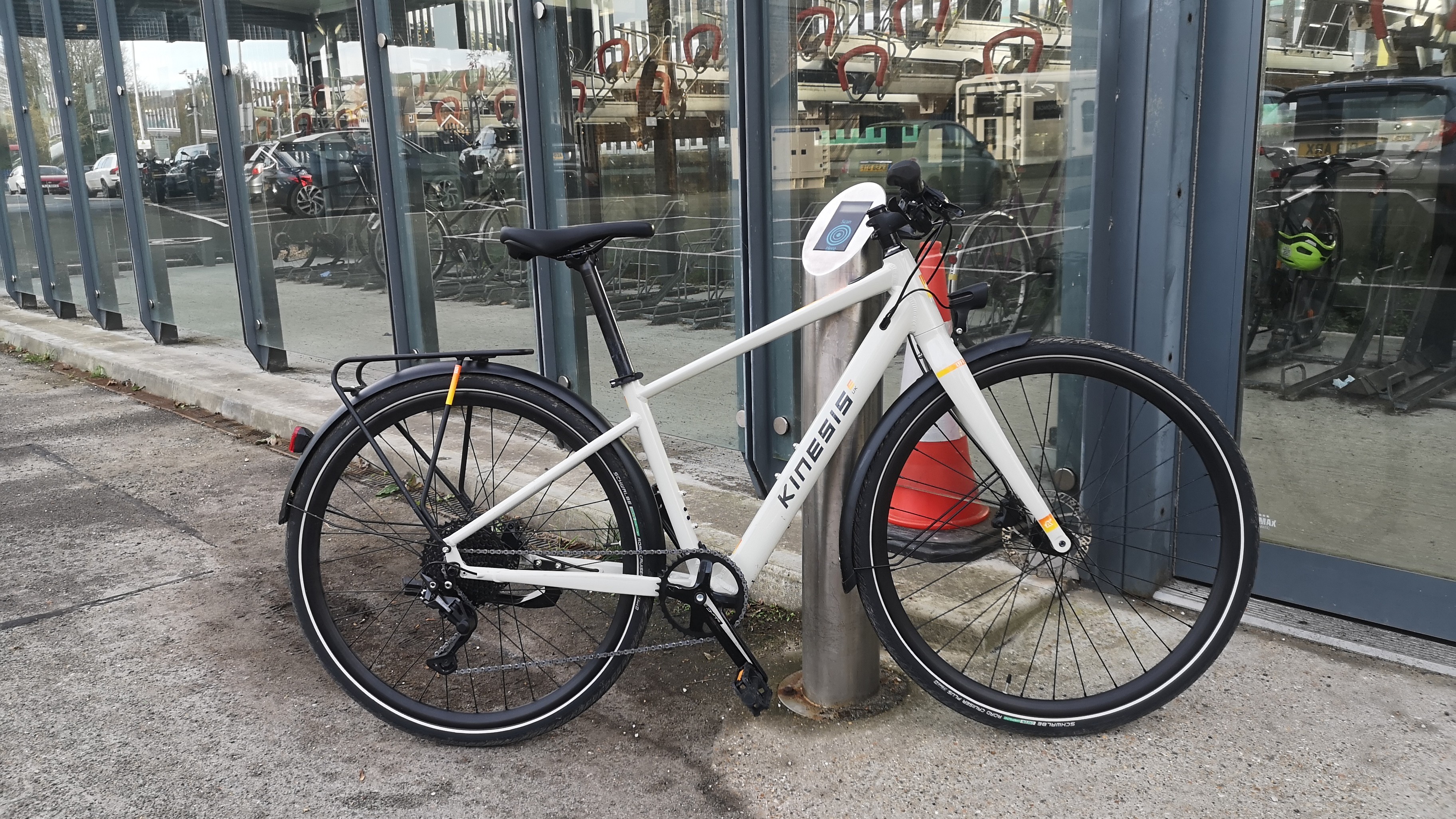
I called this bike in to test myself. However, I must admit that there have been two testers riding it. In fact, I’ve found it rather hard to keep my husband off it - in truth, the size Small is far too little for him (he’s 6ft, I'm 5ft5), but we’ve both found having an e-bike in the house extremely convenient for running errands.
It isn't advisable for riders of very different heights to share the same bike unless it's been designed with extreme adjustability (like some of the best folding bikes) - I don't think it'd do his knees much good long term, so please don't follow our example.
For a rider within the correct height range, the geometry makes for an extremely comfortable and stable ride, this is bolstered by the wide tyres, rubber this width would inspire confidence even in a nervous rider. The swept-back handlebars also go some way to installing confidence via the stability of an upright position, and a wide stance.
In fact, it turns out that with some careful optimisation of the boxes, it’s even possible to ferry 30 farm shop eggs on board, which says a lot about the compliance offered via those tyres.
The fully loaded nature of this bike is a real selling point. In-built lights, a ready to use pannier rack, and mudguards mean there’s not really anything you need to add on - aside from perhaps a lock. If I’m being picky, I’d add a flap on the end of the mudgaurds, to make them longer and thus more protective.
It’s also important to know that the lights are very much of the ‘be seen’ variety, if you’re riding unlit roads after dark, you will need a brighter beam as well (we suggest 1,000 lumens plus for this job).
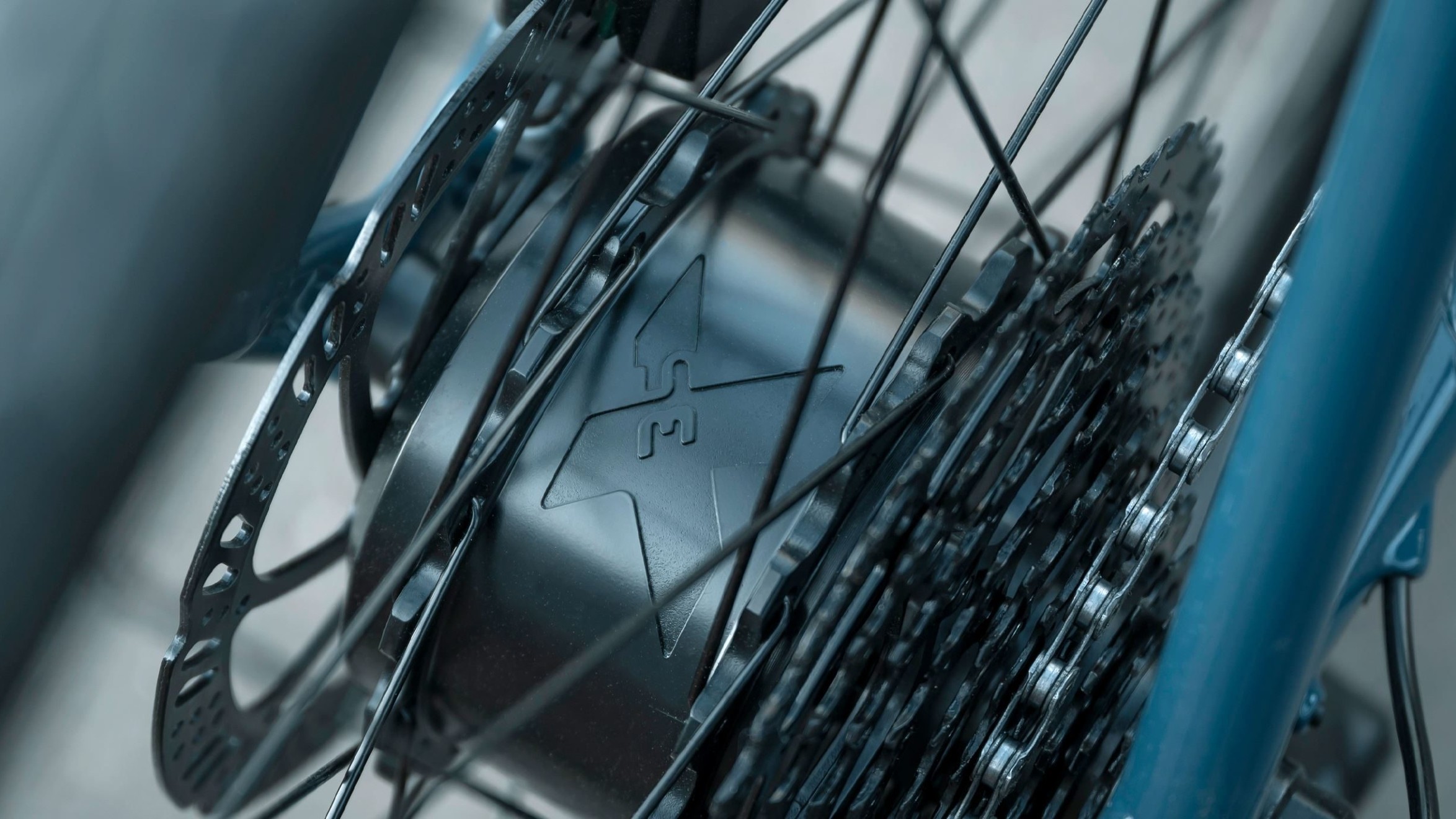
On to the meaty bit - the motor. The Ebikemotion system is becoming increasingly common. Being rear hub-based, you will feel its weight if you exceed 15mph (the UK limit for e-bikes) on a short, sharp roller of a hill. This is relevant on the likes of e-road bikes, like the Scott Addict eRide, because the low weight and more aero position mean it's reasonable you can expect to want to exceed 15mph (the UK legal e-bile limit) on rolling terrain. On a commuter bike like this, it’s best just to monitor your own exertion and drop back a gear to let the power kick in.
At 40Nm, this motor doesn't give you a big 'whoosh' at the lights, and you still need to keep up a strong and even cadence, so expect to get some exercise and not a free ride.
The only quibble with this system is the mode-changing set-up. There is a button on the top tube, which indicates mode usage and battery life via colour codes. To change modes, you press and then tap to cycle through the colours.
The last four reviewers I have commissioned to test this system have complained that it is not intuitive, this criticism has been independent, and without prompting. Reasons given have varied from confusion over the colour coding to lacking the confidence to look down and change mode when riding.
Kinesis' rep told me that they've not heard this feedback from customers, and perhaps the process becomes more user-friendly over long term use. That may well be the case, but during my short test period, all I wanted was a nice simple 'up/down' arrow code, similar to the system on Specialized bikes, or an in-built computer as per most Bosch or Shimano Steps powered e-bikes.
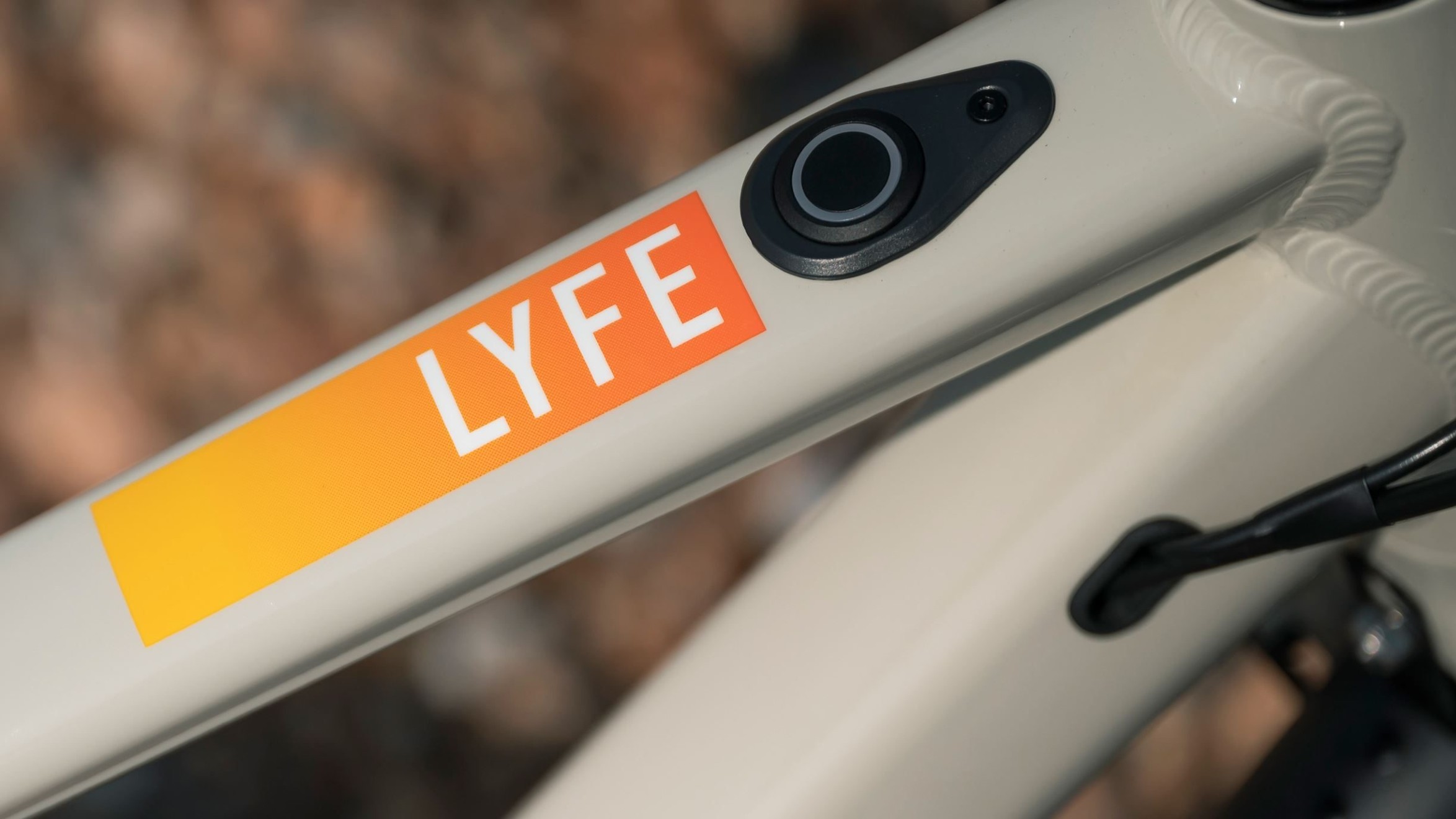
All of this said, the motor does communicate via Bluetooth, you can either increase or decrease the battery via the App on your phone (which you can attach to your handlebars via one of the best phone mounts for cycling) or via a cycling computer. So, it’s not a problem as such, but a pain the on-bike solution isn’t as user friendly as it should be.
The App contains many clever extra features, too - for example, you can map the power assistance to tune to your own requirements, or pair it with a heart rate monitor to alert you should you exceed a pre-set threshold.
Braking and shifting wise, I have no quibbles at all, the handling is excellent and I had a lot of fun swooping round the corners on our estate.
Value and conclusions
At £2300, weighing 16.5kg the Kenesis Lyfe fairs very well against the competition.
When considering e-bikes, we often look to Ribble for the best value - its direct-only sales method allowing for a premium product at a low price. The Ribble Hybrid AL e, in its loaded form, starts at £2299 and also uses the Mahle Ebikemotion X35 motor, albeit the boosted X35+. The Mavic wheels are somewhat of an upgrade but the spec sheets are comparable.
Both bikes represent excellent value when compared with the most well-known names, the most recent iteration of the Turbo Vado range from Specialized, for example, places its entry point £500 north, at £2800.
Kinesis Lyfe specification
- FRAME Kinesis Lyfe Double Butted Alloy 6061 frame
- FORK Kinesis Lyfe Alloy Fork, Tapered Steerer, Flat Disc Mount, 12 mm X 100 mm Thru Axle
- EBIKE SYSTEM EBikeMotion X35 250w 40Nm hub driven motor
- HEADSET FSA No. 42 Integrated Road, 1 1/2" Lower and 1 1/8" Upper Sealed Bearings
- SHIFT LEVERS Shimano SL-T6000-R Deore 10 Speed
- REAR MECH Shimano RD-M4120 Deore 10 Speed
- CHAIN KMC X10 EPT Anti Rust
- BOTTOM BRACKET FSA Sealed, Oversize bearings
- BRAKES Tektro HD-R280 Hydraulic, 160mm rotor
- CASSETTE Sunrace 11-42t 10 Speed
- CRANKSET FSA Vera Pro 1x, 40t chainring, 170mm crank length
- REAR HUB EBikeMotion X35
- RIM Aluminium Tubeless Ready
- TYRE Schwalbe Road Cruiser Plus Puncture Guard 700 x 42c
- SEATPOST Black Alloy 6061, 31.6mm, 5mm offset.
- HANDLEBAR Black Alloy 6061, 31.8mm bar clamp, 690mm width, 9 degree sweep
- STEM Black Alloy 6061 SM:70mm, MD:80mm, LG:90mm, XL:100mm
- GRIPS Kinesis Crosstown Ergo grips
- SADDLE Kinesis Crosstown Anti Slip saddle
- PEDAL Flat Composite
- BIKE WEIGHT 16.5kg

Thank you for reading 20 articles this month* Join now for unlimited access
Enjoy your first month for just £1 / $1 / €1
*Read 5 free articles per month without a subscription

Join now for unlimited access
Try first month for just £1 / $1 / €1
Get The Leadout Newsletter
The latest race content, interviews, features, reviews and expert buying guides, direct to your inbox!
Michelle Arthurs-Brennan the Editor of Cycling Weekly website. An NCTJ qualified traditional journalist by trade, Michelle began her career working for local newspapers. She's worked within the cycling industry since 2012, and joined the Cycling Weekly team in 2017, having previously been Editor at Total Women's Cycling. Prior to welcoming her first daughter in 2022, Michelle raced on the road, track, and in time trials, and still rides as much as she can - albeit a fair proportion indoors, for now.
Michelle is on maternity leave from April 2025 until spring 2026.
-
 'This is the marriage venue, no?': how one rider ran the whole gamut of hallucinations in a single race
'This is the marriage venue, no?': how one rider ran the whole gamut of hallucinations in a single raceKabir Rachure's first RAAM was a crazy experience in more ways than one, he tells Cycling Weekly's Going Long podcast
By James Shrubsall Published
-
 Full Tour of Britain Women route announced, taking place from North Yorkshire to Glasgow
Full Tour of Britain Women route announced, taking place from North Yorkshire to GlasgowBritish Cycling's Women's WorldTour four-stage race will take place in northern England and Scotland
By Tom Thewlis Published
-
 Positive signs for UK bike industry as Halfords cycling sales grow
Positive signs for UK bike industry as Halfords cycling sales growRetailer admits that the impact of Donald Trump's tariffs remains to be seen
By Tom Thewlis Published